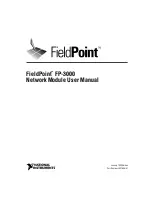
Viper SC+™ IP Router for Licensed Spectrum PN 001-5008-000 Rev. C
| Page 67
RF Transmit Queue Configuration
Enable
(or Disable)
Place a check mark in the check box to enable a queue. Clear the check box to disable the queue. At least one LAN
port queue must be enabled at all times.
Rate (%)
The minimum guaranteed bit rate (expressed as a percentage of the available bandwidth). Minimum value is 0 %.
Maximum value is 100 %. A value of 0 % means discard any packets sent to this queue.
Ceiling (%)
The maximum bit rate (expressed as a percentage of the available bandwidth). Minimum value is 1 %. Maximum
value is 100 %.
Queue Size (packets)
The maximum amount of packets the transmit queue can hold. Minimum value is 1 packet. Maximum value is 128
packets.
High Priority
When sending packets, the packet scheduler sends a packet from one transmit queue, moves to the next transmit
queue and sends one packet, then moves to the next transmit queue, etc. All this is done while maintaining the
configured throughputs per transmit queue. When the high priority queue is set, this queue will be processed first
when transmitting, and once per every two other queues.
Restore QoS Defaults
— Click to restore default configuration settings for RF Transmit Queues.
Save
— Click Save to save any changes you have made in this tab.
Cancel
— Click Cancel to cancel any changes you may have made to any of the settings in this tab.
Filters
Settings in this section allow you to define up to 128 QoS filters to classify the packets in the various RF transmit
queues. The following fields are used to define filters.
Ethernet Type
Configurable in bridge mode only. Select one of the standard Ethernet types (e.g., ARP, IPv4, VLAN tag, etc.), or
enter the hex value of any Ethernet types defined by the IEEE
(
http://standards.ieee.org/develop/regauth/ethertype/eth.txt
VLAN ID
The VLAN identifier is used only if operating in bridge mode.
Source IP Address
Use this to specify a range of IP addresses that will represent valid source IP addresses. (For example,
200.200.200.0/24, 200.200.200.1/32.)
Source Port
The UDP/TCP source port number. (A value of 0 means any value.)
Destination IP Address
Use this to specify a range of IP addresses that will represent valid destination IP addresses. (For example,
200.200.200.0/24, 200.200.200.1/32.)
















































